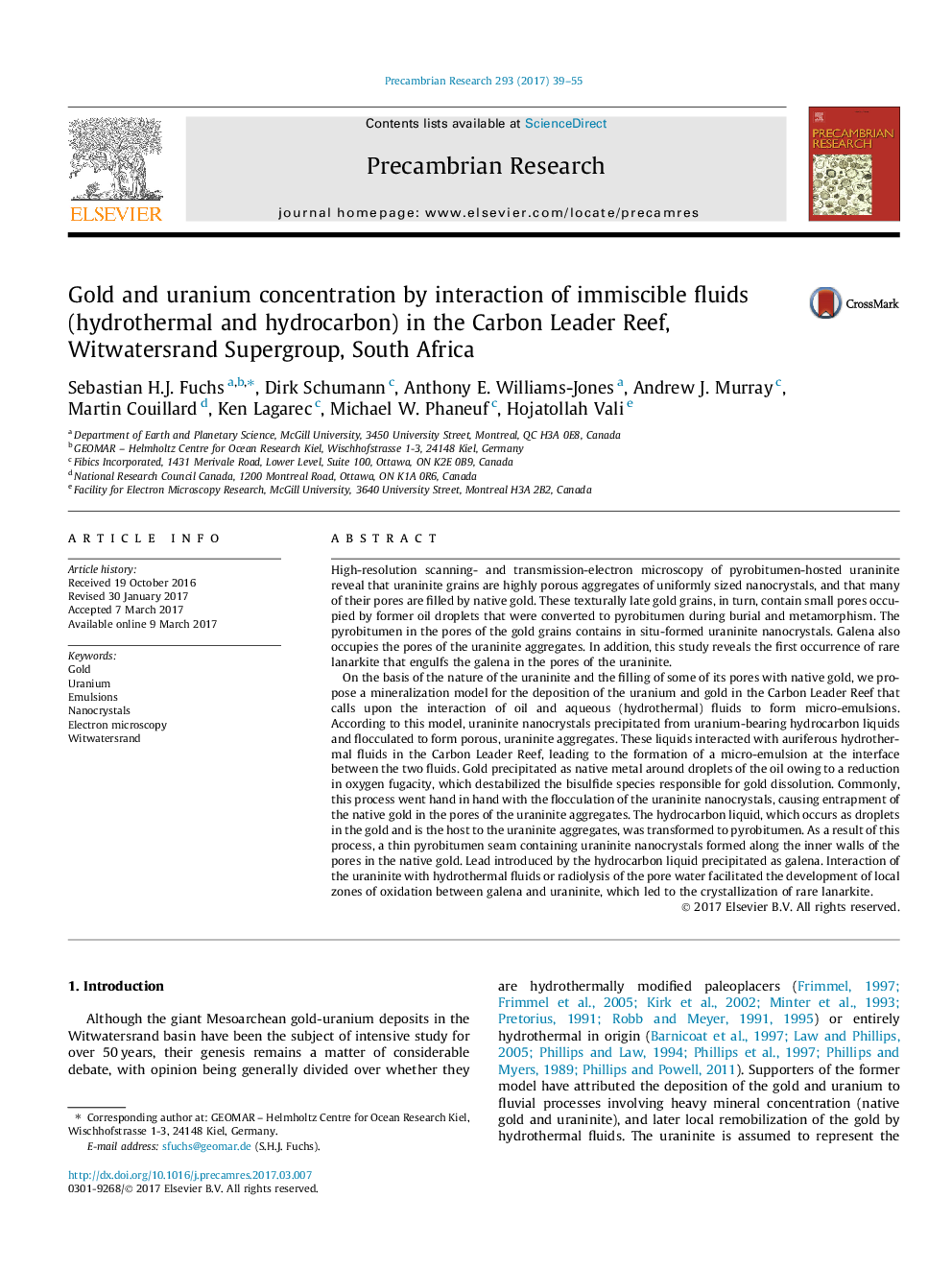| کد مقاله | کد نشریه | سال انتشار | مقاله انگلیسی | نسخه تمام متن |
|---|---|---|---|---|
| 5784899 | 1639582 | 2017 | 17 صفحه PDF | دانلود رایگان |

- Aggregates of uraninite nanocrystals host inclusions of native gold.
- Oil droplets triggered precipitation of gold precipitated from hydrothermal fluids.
- Hydrocarbon inclusions in native gold contain in-situ grown uraninite nanocrystals.
- Water-oil emulsions were responsible for the in-situ growth of gold and uraninite.
- Lanarkite formed in local oxidation zones on galena - uraninite interfaces.
High-resolution scanning- and transmission-electron microscopy of pyrobitumen-hosted uraninite reveal that uraninite grains are highly porous aggregates of uniformly sized nanocrystals, and that many of their pores are filled by native gold. These texturally late gold grains, in turn, contain small pores occupied by former oil droplets that were converted to pyrobitumen during burial and metamorphism. The pyrobitumen in the pores of the gold grains contains in situ-formed uraninite nanocrystals. Galena also occupies the pores of the uraninite aggregates. In addition, this study reveals the first occurrence of rare lanarkite that engulfs the galena in the pores of the uraninite.On the basis of the nature of the uraninite and the filling of some of its pores with native gold, we propose a mineralization model for the deposition of the uranium and gold in the Carbon Leader Reef that calls upon the interaction of oil and aqueous (hydrothermal) fluids to form micro-emulsions. According to this model, uraninite nanocrystals precipitated from uranium-bearing hydrocarbon liquids and flocculated to form porous, uraninite aggregates. These liquids interacted with auriferous hydrothermal fluids in the Carbon Leader Reef, leading to the formation of a micro-emulsion at the interface between the two fluids. Gold precipitated as native metal around droplets of the oil owing to a reduction in oxygen fugacity, which destabilized the bisulfide species responsible for gold dissolution. Commonly, this process went hand in hand with the flocculation of the uraninite nanocrystals, causing entrapment of the native gold in the pores of the uraninite aggregates. The hydrocarbon liquid, which occurs as droplets in the gold and is the host to the uraninite aggregates, was transformed to pyrobitumen. As a result of this process, a thin pyrobitumen seam containing uraninite nanocrystals formed along the inner walls of the pores in the native gold. Lead introduced by the hydrocarbon liquid precipitated as galena. Interaction of the uraninite with hydrothermal fluids or radiolysis of the pore water facilitated the development of local zones of oxidation between galena and uraninite, which led to the crystallization of rare lanarkite.
Journal: Precambrian Research - Volume 293, May 2017, Pages 39-55